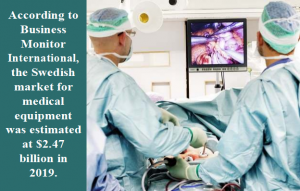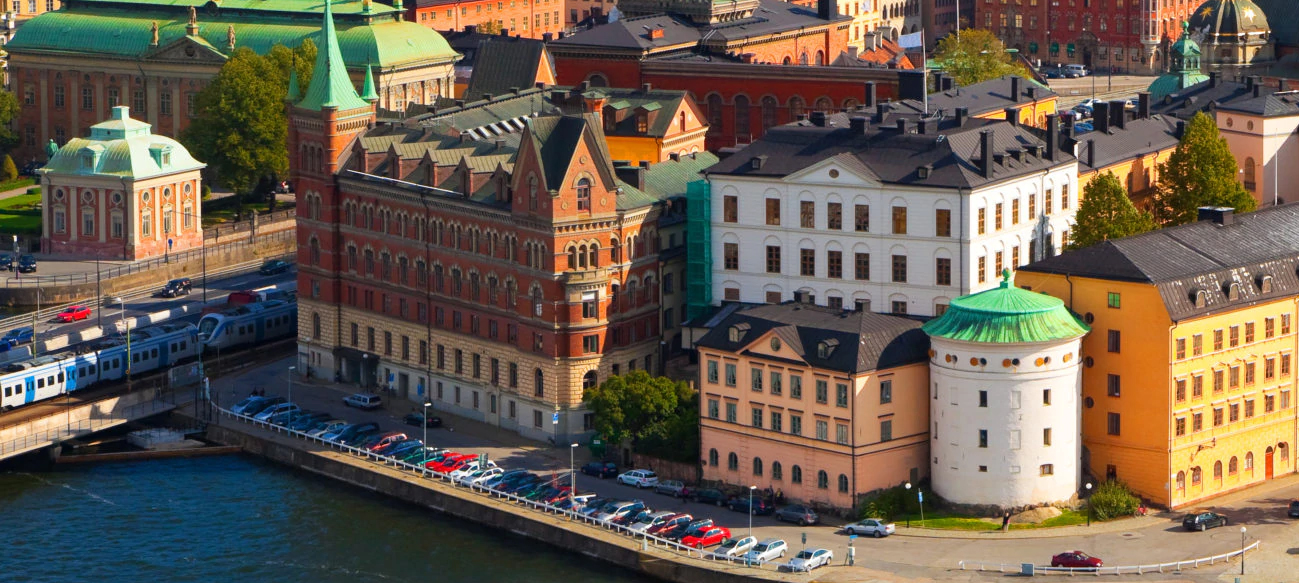E-health is an integrated part of the healthcare sector. Swedish County Councils spend about SEK 10.6 billion ($1.2 billion) annually in healthcare IT, of which SEK 8 billion ($0.9 billion) is used for the procurement of services, software, equipment and supplies. It is estimated that 95% of all documentation in primary care is made in electronic healthcare records (EHRs), while the corresponding figure for specialized hospital care is estimated at 69%. E-prescriptions have become very popular, and it is estimated that 99% of all pharmaceutical prescriptions in Sweden are issued electronically
The official Kingdom of Sweden, is a Nordic country in Northern Europe. It borders Norway to the west and north, Finland to the east, and is connected to Denmark in the southwest by a bridge-tunnel across the Öresund Strait. At 450,295 square kilometers (173,860 sq mi), Sweden is the largest country in Northern Europe, the third-largest country in the European Union and the fifth largest country in Europe by area.
The capital city is Stockholm. Sweden has a total population of 10.4 million and a low population density of 25 inhabitants per square kilometer (65/sq mi). 87% of Swedes live in urban areas, which cover 1.5% of the entire land area. The highest concentration is in the central and southern half of the country.
Sweden is part of the geographical area of Fennoscandia. The climate is in general mild for its northerly latitude due to significant maritime influence. In spite of the high latitude, Sweden often has warm continental summers, being located in between the North Atlantic, the Baltic Sea and the vast Eurasian Russian landmass. The general climate and environment vary significantly from the south and north due to the vast latitudal difference, and much of Sweden has reliably cold and snowy winters. Southern Sweden is predominantly agricultural, while the north is heavily forested and includes a portion of the Scandinavian Mountains.
The country is a constitutional monarchy and a parliamentary democracy, with legislative power vested in the 349-member unicameral Riksdag. It is a unitary state, currently divided into 21 counties and 290 municipalities. Sweden maintains a Nordic social welfare system that provides universal health care and tertiary education for its citizens. It has the world’s eleventh-highest per capita income and ranks very highly in quality of life, health, education, protection of civil liberties, economic competitiveness, income equality, gender equality, prosperity and human development. Sweden joined the European Union on 1 January 1995, but has rejected NATO membership, as well as Eurozone membership following a referendum. It is also a member of the United Nations, the Nordic Council, the Council of Europe, the World Trade Organization and the Organization for Economic Co-operation and Development (OECD).
 Healthcare sector
Healthcare sector
Sweden’s healthcare system is one of the best and well- developed in the world. The population of 10 million enjoys very good health overall. Sweden spends about 11% of its Gross Domestic Product (GDP) on health and medical services, which is on par with most other European countries. The infant mortality rate is less than 2.6 deaths per 1,000 in the first year of life and the average life expectancy is 80 years for men and 84 years for women. As Sweden has a population that is one of the oldest in the world (20.37% are 65 years or older), there will be an increasing demand for medical equipment and supplies, as well longer-term medical treatments, to meet the health needs of an aging population.
The responsibility for health and medical care in Sweden is shared by the central government, the regions, and the municipalities. Sweden is divided into 290 municipalities and 21 regions. The regions have the primary responsibility for providing health and medical services. They decide on the allocation of resources to health services and are responsible for the overall planning of the services offered. It is also the regions that own and run the hospitals, health centers, and other institutions. Regions are responsible for dental care for residents up to the age of 23. The 290 municipalities are responsible for the disabled, home healthcare of the elderly, and nursing homes. They are also responsible for providing care for people with psychological disorders, support and services for people released from hospital care, and school healthcare. Private healthcare, accounting for 12% of total healthcare costs, mainly offers primary care, such as healthcare centers or homes for the elderly.
 E-Health
E-Health
The Swedish government launched a national strategy for e- health in 2006, updated in 2010, which emphasizes that information and communication technology will be used as a strategic tool at all levels in the healthcare sector. It also states that ‘citizens must also be able to contact care services via the internet for assistance, advice or help with self-treatment.’ In 2017, for continued development work in the field of e- health, the Swedish government and the Swedish Association of Local Authorities and Regions endorsed a common vision for e-health by 2025. The vision replaced the latest strategy from 2010 and will continue to build on the ideas and approaches to make use of the opportunities of digitization in social services and health care. The vision states that, ‘in 2025, Sweden will be best in the world at using the opportunities offered by digitization and eHealth to make it easier for people to achieve good and equal health and welfare, and to develop and strengthen their own resources for increased independence and participation in the life of society’.
Today, e-health is an integrated part of the healthcare sector. Swedish County Councils spend about SEK 10.6 billion ($1.2 billion) annually in healthcare IT, of which SEK 8 billion ($0.9 billion) is used for the procurement of services, software, equipment, and supplies. It is estimated that 95% of all documentation in primary care is made in electronic healthcare records (EHRs), while the corresponding figure for specialized hospital care is estimated at 69%. E-prescriptions have become very popular, and it is estimated that 99% of all pharmaceutical prescriptions in Sweden are issued electronically.
Medical devices market
The variation of medical devices includes advanced technologies with invasive treatment methods to items used for daily care such as bandages or test strips and even IT- systems. Effects of medical devices are generally reached without the aid of pharmaceutical, immunological or metabolic substances.
According to Business Monitor International, the Swedish market for medical equipment was estimated at $2.47 billion in 2019, and it ranks Sweden as the fourth most attractive market in Western Europe in which to commercialize a medical device. The medical equipment market is expected to grow around three percent annually. While most of the domestic manufacture is for export (estimated value at $1.7 billion in 2018), the medical equipment market is dependent on imports. In 2018, imports were estimated at $2 billion.
U.S. firms interested in entering the Swedish market will find that the market is competitive and, therefore, should establish a local presence, either through local agents and distributors or sales subsidiaries.
The medical device manufacturing industry in Sweden is relatively small and employs approximately 18,000 people. Domestic manufacturers are small to mid-sized companies, but many multinational medical device companies maintain subsidiaries in Sweden.
Healthcare spending per capita is high in Sweden almost $5000 and it is home to a large aging population – 18% of Swedes are over 65. As such, the local healthcare industry is receptive to innovative technologies that are effective at treating and mitigating chronic and age-related diseases. There is consistent demand for diabetes products, user- friendly home care, orthopedic and implantable devices, minimally-/non-invasive equipment, and e-health products.
















